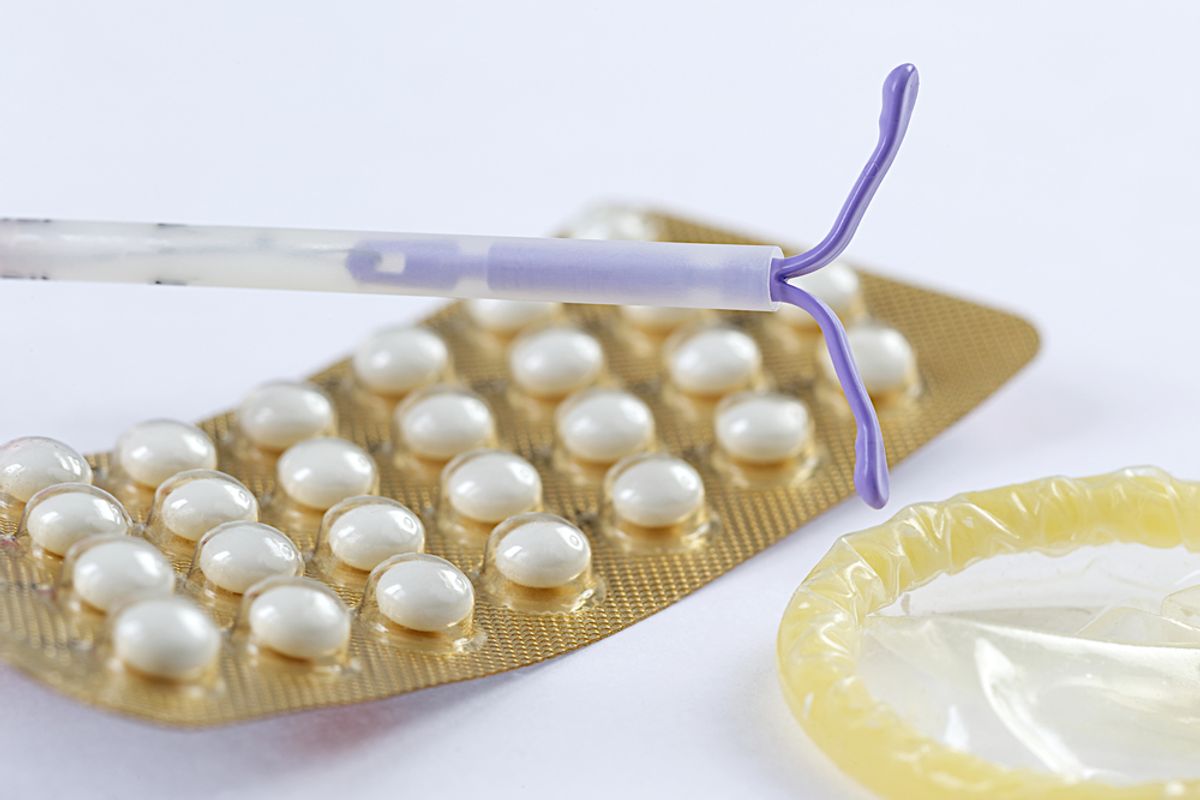Contraception prevents pregnancy. It follows, then, that widespread access to contraception among certain populations can reduce pregnancy rates in those populations. Right? Well that's exactly what an important new study published in the New England Journal of Medicine has found with regard to teenagers. Researchers concluded that giving teens access to education about contraception and to free birth control can cause their pregnancy rates to plunge -- and, as a result, can reduce teen abortion rates by up to 78 percent.
The findings come from several years of study by the Contraceptive CHOICE Project, which gave over 1,400 already sexually active St. Louis teens no cost birth control of their choice. Of the approximately 500 minors aged 14 to 17 involved in the study, half reported a previous unintended pregnancy, and nearly a fifth had had at least one abortion. Researchers found, however, that the young women were amenable to trying different contraceptive options. Additionally, when offered knowledge of their choices, as well as a variety of choices, teens tended to opt for long-acting birth control methods such as IUDs and hormonal implants. Just this week, the American Academy of Pediatrics determined that these methods are the most effective for teens; the CHOICE study finds that they are also the most desirable.
"When we removed barriers to contraception for teens such as lack of knowledge, limited access and cost in a group of teens, we were able to lower pregnancy, birth and abortion rates," Gina Secura, director of the CHOICE Project and the study's lead author, said in a statement. "This study demonstrates there is a lot more we can do to reduce the teen pregnancy rate."
The teens who chose long-acting methods exhibited an extraordinary reduction in their pregnancy rates, highlighting a strategy that could be used to reduce unintended pregnancies across the United States. In 2008, the pregnancy rate for U.S. teens was 158.8 per 1,000 -- which might not seem high, until it's compared to the rates of other industrialized nations. Or, rather, it might not seem high until it's compared to the rates for teens involved int he CHOICE study: From 2008 to 2013, the annual pregnancy rate for women aged 15 to 19 involved in the study averaged 34 per 1,000. The annual birth rate, on average, was 19.4 per 1,000; for sexually active U.S. teens in 2008, it was 94 per 1,000.
Of course, offering teens free access to birth control didn't just drop pregnancy and birth rates; abortion rates among CHOICE teens also dropped dramatically as well. While lawmakers attempt to restrict access to contraception and abortion, the study highlights the fact that by increasing access to the former, the need for the latter is reduced substantially. In 2008, U.S. sexually active teens had an abortion rate of 41.5 per 1,000. The CHOICE teens had an average annual rate of 9.7 per 1,000 over the course of five years -- because they had access to contraception, which meant fewer pregnancies, which actually, in real life, meant fewer abortions.
The Centers for Disease Control and Prevention have listed unintended teen pregnancy as one of its six "winnable battles," and the CHOICE study only underscores why. By CDC standards, a "winnable battle" is one with an identifiable solution; right now, the goal is to reduce teen pregnancy rates from 37.9 per 1,000 (in 2009) to 30.3 per 1,000 (in 2015). The rate in the CHOICE study was even lower than that. So what is the identifiable solution? Doing what the CHOICE study did.
Preventing teen pregnancy and abortion is as easy as giving teens options. It's as easy as allowing them to take control of their health. When they do, they make healthy choices for years; researchers found that a significant number of teens involved in the study stuck with their long-acting methods of birth control for two to three years after beginning use. So long as they can access these options -- which, at the moment, many can't -- teens will choose to avoid unintended pregnancy and abortion.

Shares